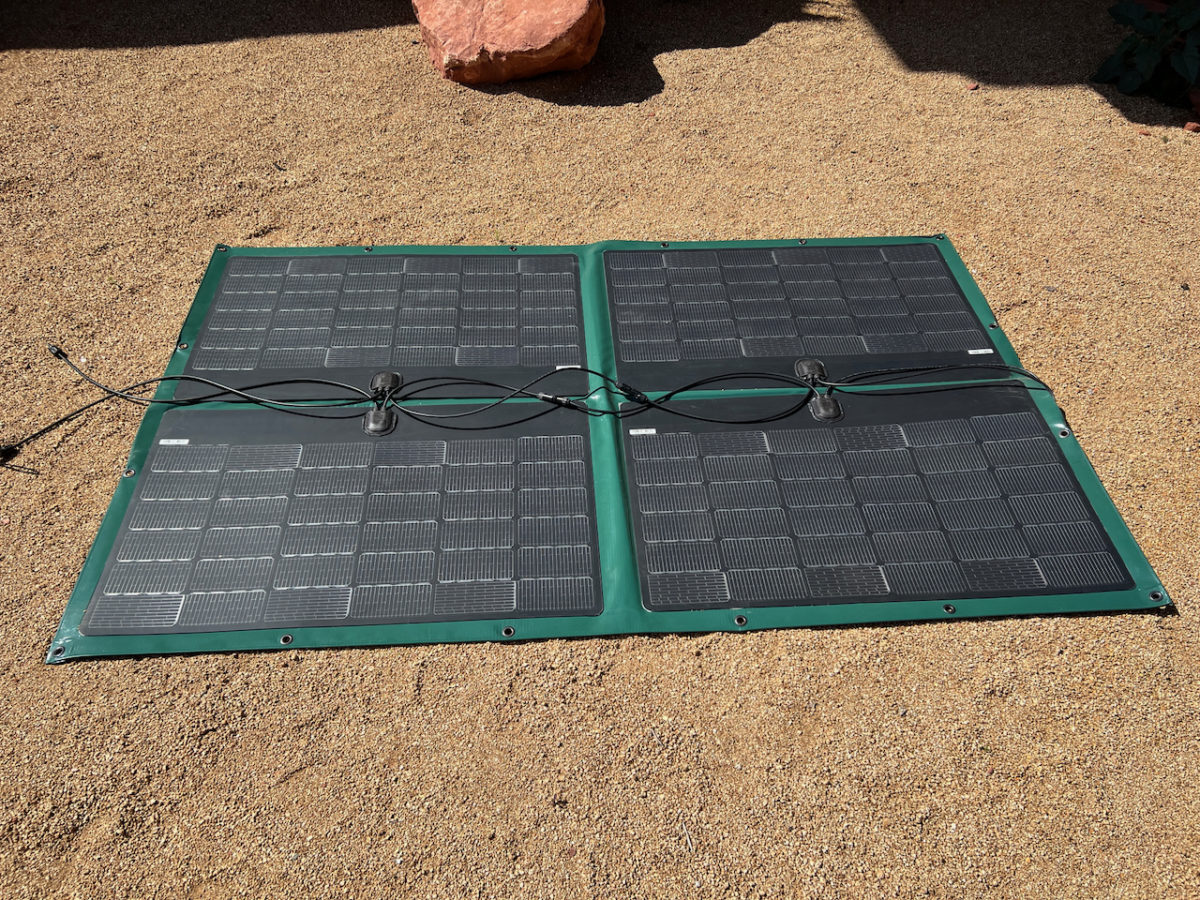Arizona-based startup New Use Energy Solutions has unveiled SunTarp, a new line of portable frameless solar PV panels for off-grid and residential applications.
“We found that adhering multiple modules to a custom vinyl tarp allows the user to reconfigure the modules strings to accommodate 12, 24 & 48V off-grid systems all the way up to residential type all-in-one inverters that require over 120 Vdc to charge batteries. ,” the company's COO, Lee Feliciano, told pv magazine. “Our module provider is US-based Merlin Solar.”
The system is built with flexible modules provided by Merlin Solar with a power output of 70 and 80 W, respectively.
New Use Energy Solutions' PV array is available in three versions; the TriFold SunTarp array, which combines three solar modules, weighs 6.8 kg and has a power output of 210 W; the 320 W FourFold SunTarp model that integrates four panels and weighs in at 10.8 kg; and the six-module HexFold SunTarp which has a power output of 410 W and has a weight of 20.4 kg.
“They store easily even in the trunk of compact cars, and we can scale them into larger arrays,” the company's CEO, Paul Shmotolokha, stated. “Our modules are 30% lighter than traditional monocrystalline solar panels and easy to fold, carry and stow.”
According to the company's website, the TriFold SunTarp array is sold at $906.53, while the FourFold SunTarp and HexFold SunTarp have a price of $1,318.45 and $1,806.13, respectively. “They provide way more power than the rather small tiny panel kits that small portable power stations provide,” Feliciano stated.
*The article was updated on July 25 to reflect that Merlin Solar's modules are not based on solar cells provided by Sunpower.
This content is protected by copyright and may not be reused. If you want to cooperate with us and would like to reuse some of our content, please contact: editors@pv-magazine.com.




I would like to see a portable solar panel that can be placed anywhere in a sunny area of a garden that could then be plugged into the house to contribute to the power consumption of the property and reduce reliance on the grid